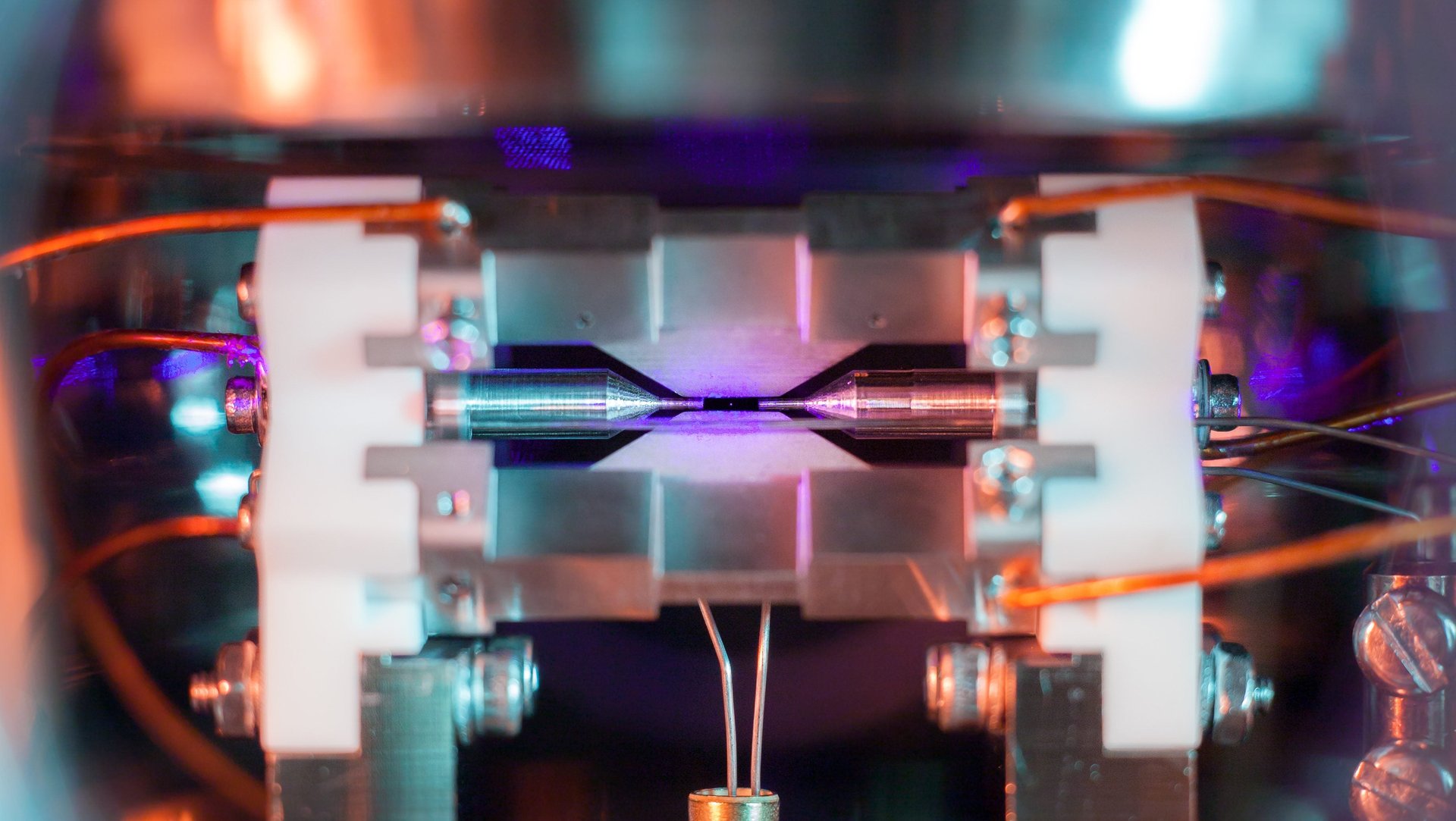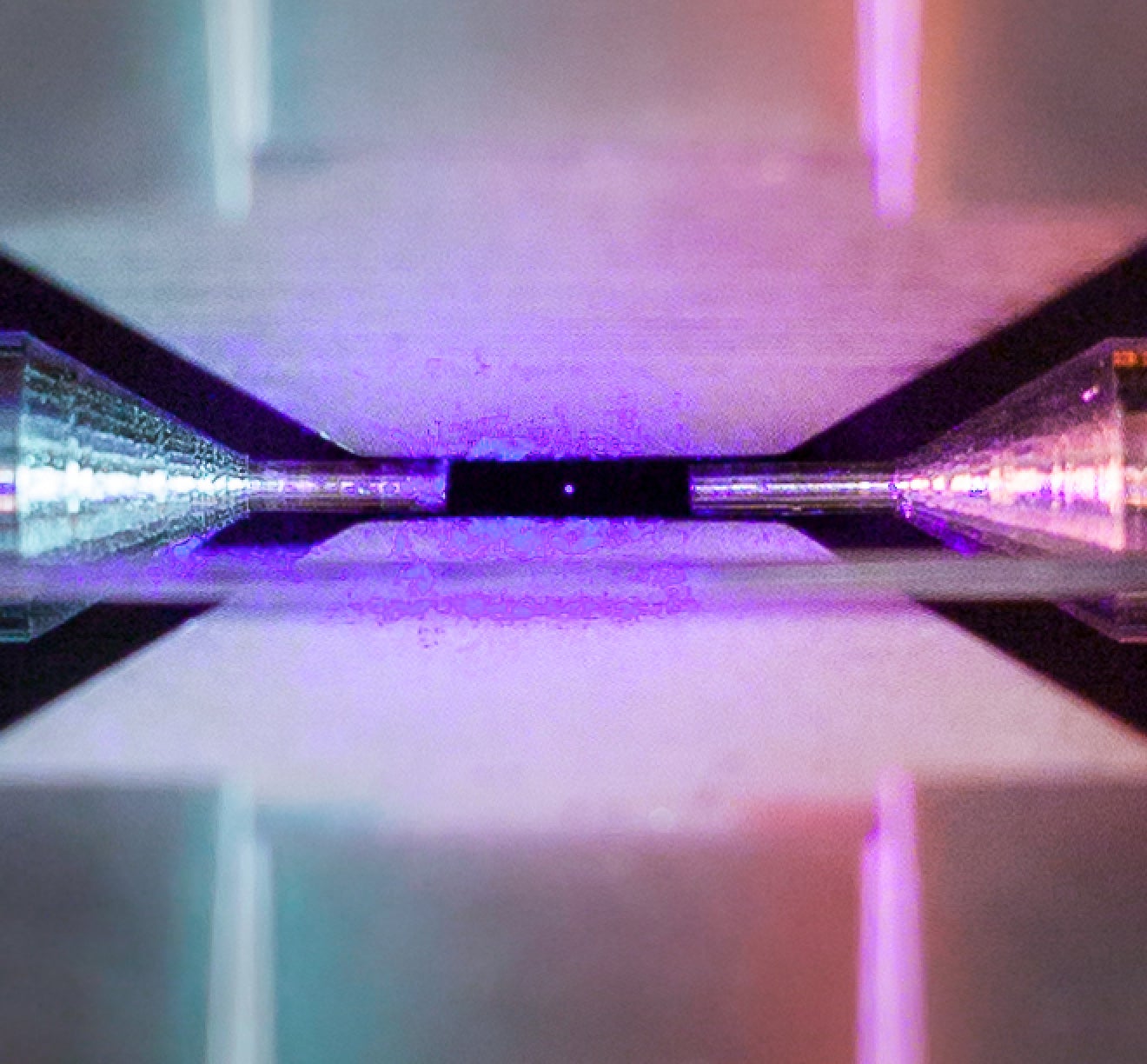A scientist captured an impossible photo of a single atom
A student at the University of Oxford is being celebrated in the world of science photography for capturing a single, floating atom with an ordinary camera.


A student at the University of Oxford is being celebrated in the world of science photography for capturing a single, floating atom with an ordinary camera.
Using long exposure, PhD candidate David Nadlinger took a photo of a glowing atom in an intricate web of laboratory machinery. In it, the single strontium atom is illuminated by a laser while suspended in the air by two electrodes. For a sense of scale, those two electrodes on each side of the tiny dot are only two millimeters apart.
The image won first prize in a science photo contest conducted by UK based Engineering and Physical Sciences Research Council (EPSRC).

The EPSRC explains how a single atom is somehow visible to a normal camera:
When illuminated by a laser of the right blue-violet colour, the atom absorbs and re-emits light particles sufficiently quickly for an ordinary camera to capture it in a long exposure photograph.
In the award’s announcement, Nadlinger, a quantum physicist, is quoted on trying to render the microscopic visible through conventional photography. “The idea of being able to see a single atom with the naked eye had struck me as a wonderfully direct and visceral bridge between the miniscule quantum world and our macroscopic reality,” he said.
Other than using extension tubes, a lens accessory that increases the focal length of an existing lens and is typically reserved for extreme close-up photography, Nadlinger used normal gear that most photographers have access to. Even without a particularly complicated rig, his patience and attention to detail paid off.
“When I set off to the lab with camera and tripods one quiet Sunday afternoon,” he said, “I was rewarded with this particular picture of a small, pale blue dot.”